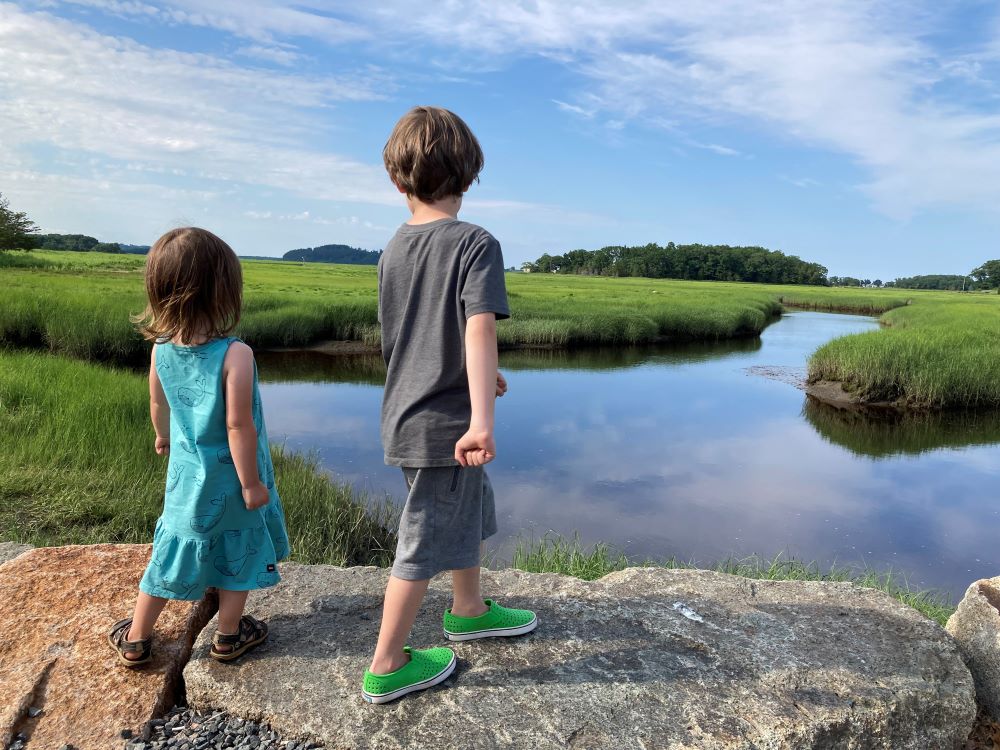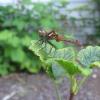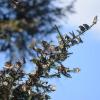Coating crop seeds in potent insecticides before planting is a practice that has become widespread—really widespread. Treated seeds are used to grow nearly all corn and the majority of soybeans planted across roughly 148 million acres in the Midwest. They are also used in a variety of other crops, including sugar beets, squash, wheat, sorghum, sunflowers, and many more.
Contamination from seeds treated with insecticides is a growing threat to the health of rivers, streams, and lakes. To date, the use and disposal of pesticide-treated seed has been poorly regulated. But right now, the US Environmental Protection Agency (EPA) is accepting input from the public regarding the regulation of pesticide-treated seeds. This is an important opportunity for concerned individuals to tell EPA to protect the nation’s waterbodies by improving oversight of pesticide treated seeds.
Take action by submitting a formal comment now or continue reading to learn more about the risks of pesticide-treated seed and making a public comment to EPA. Comments are due February 9, 2024.
The trouble with treated seed
Neonicotinoids (“neonics”) are the most common insecticide seed treatments. Neonics are “systemic” which means they are absorbed by the plant’s tissues as it grows. Yet only a small fraction of a pesticide seed coating is taken up by the crop plant: over 90% ends up in soil, water, and plants elsewhere in the environment. Because they are so widely used as a preventive treatment year after year, neonics are increasingly turning up in samples of surface and groundwater across the county.
The widespread use of insecticide-treated seeds has been linked with declines of critically important creatures like caddisflies, mayflies, stoneflies and other aquatic invertebrates. They help to decompose leaf matter, filter water, and control erosion. Perhaps most importantly, they are a key food source for fish like trout, large and small-mouthed bass, and bluegills. The Xerces Society has published sobering reports on the impacts of neonics on Midwestern and California waterways, finding that harmful levels are routinely detected. Neonics from treated seed are also turning up in water samples from states with less intensive agriculture, like Vermont.
It is important to note that growers face barriers to using untreated seed, including availability from seed companies and insurance policies that strongly favor continued use of treated seed. Recent surveys show that many growers are unaware of exactly what seed treatments they are using, in part because seed companies coat seeds in multiple pesticides. Lack of regulatory oversight of treated seed and poor policies have resulted in growers paying for pesticides they do not need.

A problematic regulatory loophole
Pesticide-treated seeds are currently exempt from pesticide registration requirements under federal law because of a regulatory loophole known as the Treated Article Exemption. In a nutshell, this means that the EPA does not regulate, track, or report on the use of treated seeds as it does other pesticides. Treated seed labels have instructions for use and disposal, but these are often unclear and not protective enough. Moreover, there is no regulatory oversight to ensure user compliance. For example, neonic-treated seed labels caution against planting near surface water, but these seeds are used for crop plantings throughout floodplains in the Midwest.
Several neonics were severely restricted in the European Union in 2013 over concerns about their effects on bees, and Québec has been successful in their recent efforts to eliminate the vast majority of neonic-treated seed use. Recent research indicates that neonic seed treatments may not even generate their promised economic benefits. It is past time for the U.S. to create stronger regulations for insecticide-treated seeds.
You can help by submitting a public comment
Right now, the Environmental Protection Agency (EPA) is seeking public comments on treated seed regulation, giving us a major opportunity to voice our concerns about the overuse of pesticide-treated seeds and to suggest important reforms. If you are concerned about the impacts of treated seeds on waterways and wildlife, the EPA needs to hear from you!
The public comment period is open until February 9, 2024. You can submit a comment and view materials relevant to this issue. Xerces recommends touching on a few of the following points:
- Your reason for writing: Why does this issue matter to you? Are you a commercial or recreational fisherman who relies on healthy rivers and streams? Are you concerned about the quality of freshwater and groundwater for people and wildlife? It is important to tell your story.
- Protecting fisheries: EPA should implement restrictions on treated seed use to protect waterways and fisheries. Neonicotinoids, which are commonly used as seed treatments, can seriously harm commercially important fish by reducing or even collapsing populations of their invertebrate food sources.
- Better labels: We need more specific label requirements on where treated seeds can be planted relative to surface water. Current label language is too vague. Seeds treated with systemic insecticides like neonics should not be permitted in areas prone to flooding.
- Widespread harm: Pesticide-treated seed is used on hundreds of millions of acres of cropland every year as a preventive measure. This means vast amounts of pesticides are applied to the land without a clear reason to do so. This creates serious environmental risks without clear economic benefits.
- Protecting bees: Planting insecticide-coated seeds can harm efforts to support bees in and around farmlands. Toxic dust can be released during planting, which can settle on bees or the flowers they feed on. The soil around fields planted with coated seed can become contaminated, which can harm ground-nesting bees that are important crop pollinators.
- Tracking use: Treated seeds make up 10% of total insecticide use. This is a substantial portion of the pesticide market and should be subject to rigorous oversight. The sale, use, and disposal of treated seed needs to be tracked and reported at the federal level.
- Safe disposal: Treated seed disposal requirements need to be clarified and strengthened. Allowing burial of waste treated seed introduces completely unnecessary soil and water contamination. Simply covering excess or spilled seed with soil does not provide adequate protection for wildlife that may ingest the seeds. Seed companies should take more responsibility for collecting and disposing of excess seed.
- Protecting wildlife: Waste treated seed is often used for conservation food plots, which are planted to support game species. We want the EPA to create label restrictions that prevent insecticide-treated seed for this purpose, as it has the potential to harm the very wildlife it is intended to support.
- View more talking points and references.
Quick links
- EPA Advance Notice of Proposed Rulemaking - more info on the comment period.
- Submit a public comment to the EPA
Further reading
- Xerces Systemic Insecticide Database - search by “Seed Treatment Use” to see which systemics are approved for use as seed coatings on various crops.
- Xerces resources for understanding neonicotinoids
- American Bird Conservancy report on neonic impacts on birds
- Xerces Fact Sheet: Insecticide Seed Treatments Threaten Midwestern Waterways
- Xerces Fact Sheet: Protecting California’s Waters from Neonicotinoid Contamination




